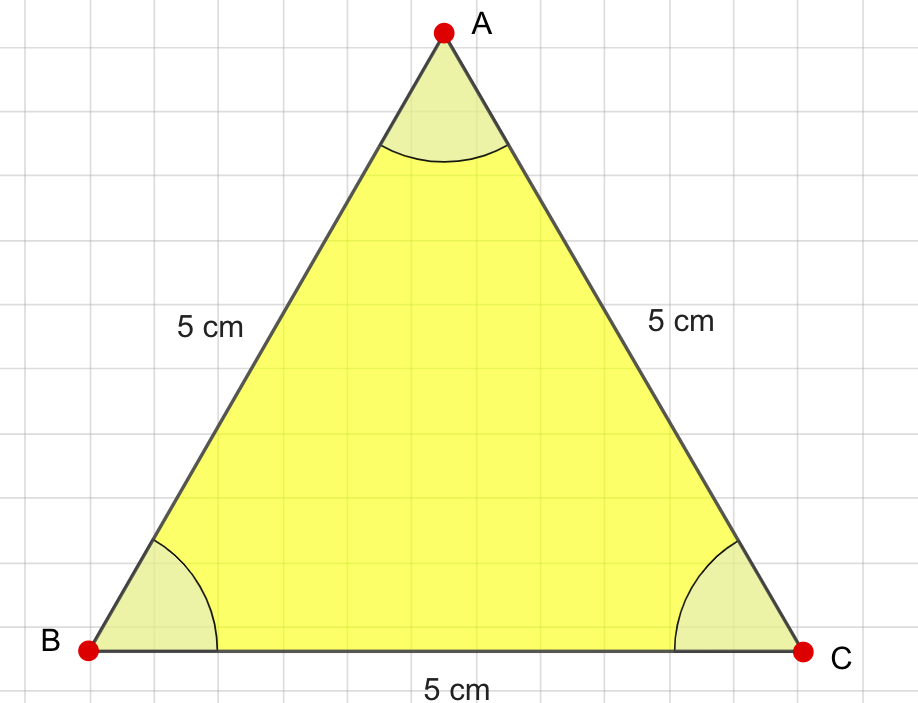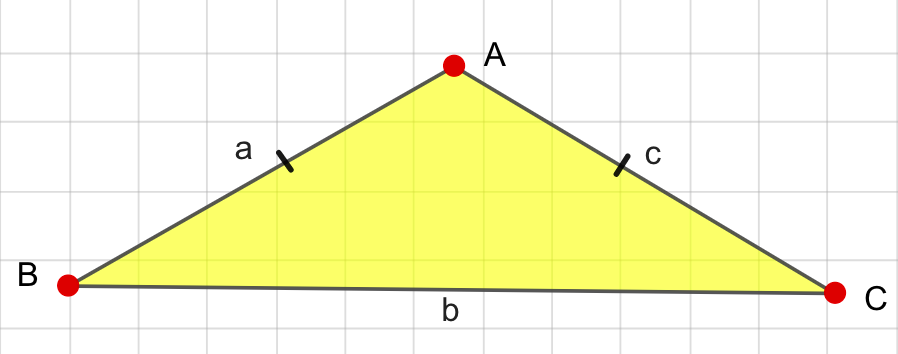Now, let's see if we can use what we've learnt to try and classify some triangles.
What triangle classification does each of the triangles below belong to?
a)
 Triangle for question a) with three labelled angles, StudySmarter Originals
Triangle for question a) with three labelled angles, StudySmarter Originals
Solution:
This triangle is an isosceles triangle, as it has two angles that are equal, and and a third that is not.
b)

Triangle for question b) with three labelled sides, StudySmarter OriginalsSolution:
This triangle is an equilateral triangle, as it has three sides of equal length.
c)
 Triangle for question c), with two labelled angles, StudySmarter Originals
Triangle for question c), with two labelled angles, StudySmarter Originals
Solution:
We are only given two angles for this triangle; however, knowing that the interior angles of a triangle always add up to we can determine the third angle, Firstly, we equate the sum of the three angles to
Then, we substitute the angles we know and rearrange the equation to find
As the third angle, is a right angle, the triangle is a right-angled triangle. As all three interior angles are different, it is also a scalene triangle.
d)
 Triangle for question d), with three labelled angles, StudySmarter
Triangle for question d), with three labelled angles, StudySmarter
Solution:
This triangle is a scalene triangle as none of its interior angles are equal.
e)

Triangle for question e) with no labelled angles or sides, StudySmarter OriginalsSolution:
The triangle is an isosceles triangle, as it has two sides of the same length, indicated by the two dashes.
f)
 Triangle for question f), with two labelled angles, StudySmarter
Triangle for question f), with two labelled angles, StudySmarter
Solution:
In this question, we are given two interior angles which are equal. By remembering that all interior angles in a triangle add up to we can use these two interior angles to find the third angle,
First, we equate the three interior angles to
Then, we substitute the angles we know and rearrange the equation to find
As the triangle has one right interior angle, and two equal interior angles, it must be both an isosceles, and a right-angled triangle.


















